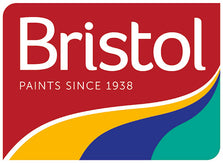
What kind of primer should I use for different surfaces?
Primer serves as an intermediary layer between the surface and the top coat of paint, helping to ensure better adhesion, a uniform appearance, and improved durability of the final paint job. The type of primer you should use largely depends on the surface material and the specific conditions of the job. Here's a basic guide:
-
Drywall:
- New Drywall: Use a drywall primer-sealer. It's designed to fill the pores and even out the surface.
- Patched Drywall: A high-build drywall primer-sealer can help smooth out uneven surfaces.
-
Wood:
- Bare Wood: Use an oil-based or water-based (latex) primer. Oil-based primers tend to penetrate wood better and prevent tannin bleed (stains from wood resins).
- Stained Wood: If the wood is stained or has tannin bleed, an oil-based primer or a shellac-based primer like BIN can be more effective at blocking stains.
- Weathered Wood: A high-quality exterior primer will help bind the fibers, provide a smoother surface, and improve adhesion.
-
Metal:
- Non-Ferrous Metals (e.g., aluminum, galvanized steel): Use a metal primer that specifies compatibility with that type of metal. Latex primers can work, but check the label.
- Iron & Steel: Use a rust-inhibiting primer.
- Previously Painted Metal: If the old paint is in good shape, you might not need a primer. If there's rust or chipping, remove as much as possible and then prime.
-
Masonry:
- Concrete, Brick, Stucco: Use a masonry primer. It helps seal the porous surface and provides a base for paint to adhere to.
-
Plastic & PVC:
- Use a primer designed for plastics. Many general-purpose primers don't adhere well to plastic surfaces, so check the label.
-
Glossy Surfaces:
- Surfaces that are glossy, like varnished wood or high-gloss paints, can be tricky. First, sand the surface lightly to give it some "tooth." Then, use a bonding primer that's designed to stick to glossy surfaces.
-
Tiles & Glass:
- A bonding primer is crucial for these surfaces as well. Make sure to clean the surface thoroughly first.
-
Problem Surfaces:
- Smoke or Water Stains: Shellac-based primers like BIN are great for blocking persistent stains.
- Mold or Mildew: Clean the surface first with a mold-killing product. Then use a primer that's resistant to mold and mildew.
-
Environment Considerations:
- Low-VOC or No-VOC Primers: If you're sensitive to fumes or painting in a space with little ventilation, consider primers labeled as low-VOC or no-VOC.
- Fast-Drying Primers: Some primers are formulated to dry faster, which can be helpful if you're trying to complete a painting project in a shorter time frame.
Remember to always read the primer label for specific application instructions and to ensure you've chosen the right product for your specific job. Proper preparation and priming are crucial for achieving a durable and high-quality finish.
